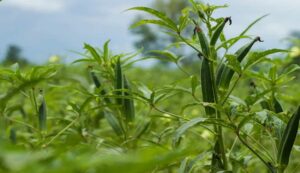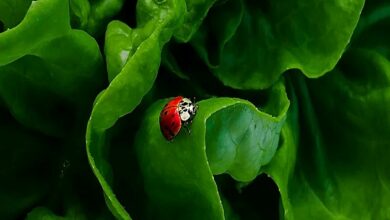Ladyfinger Farming: Follow these important tips for cultivating ladyfinger in summer, farmers will earn a lot
Ladyfinger Farming: The market is overflowing with fresh and green ladyfingers as soon as summer approaches. Everybody’s meal includes ladyfinger, whether it’s with parathas or dal-rice. However, did you know that ladyfinger has a lot of additional purposes in addition to being a tasty vegetable? Although it is eaten as a vegetable, sugar and jaggery are cleaned using its stems and roots. In addition, its fibrous stalks are advantageous to the textile and paper industries.

Ladyfinger cultivation in the summer may be a lucrative venture for anybody interested in or already engaged in farming. However, there are a few key points to remember for this.
It will only be a successful start if the temperature is appropriate
Since ladyfinger is a summer crop, temperatures over 20 degrees Celsius are thought to be ideal. However, bear in mind that the plant’s blossoms begin to collapse if the temperature rises beyond 42 degrees Celsius, which has an impact on the output. Ladyfinger may produce up to 50 quintals per hectare on average during the summer and up to 100 quintals during the wet season.
The most crucial phase is pitch preparation
For a high yield, field preparation is crucial. Ladyfinger grows best on loamy soil that is high in organic and friable materials.
The land has to be levelled and ploughed three or four times before agriculture begins. To facilitate irrigation, it is advantageous to split the field into beds throughout the summer.
Add 120 to 200 quintals of cow dung manure per hectare when discussing manure. Additionally, supplement the soil with 50 kg of nitrogen, 50 kg of phosphorus, and 50 kg of potash. The yield may be further increased by adding 50 kg of nitrogen a month after seeding.
When seeding, maintain this gap
When planting ladyfinger, pay close attention to the distance. During the summer, plants should be 12 to 15 cm apart, and rows should be 30 cm apart. This spacing should be 45 to 60 cm and 30 to 45 cm, respectively, during the wet season.
Care and irrigation
In order to maintain the soil’s moisture content throughout the summer, irrigation must be done every five to six days. Irrigation should only be done when necessary during the rainy season. To keep weeds under control, weeding should be done occasionally.
Profit and hard effort
Ladyfinger farming is undoubtedly labour-intensive, but with the correct approach and attention, this labour may be turned into financial gain. In addition to producing delicious veggies, it also provides raw materials for companies. Ladyfinger is a superb green vegetable that combines flavour, health, and income, so if you’re intending to farm this summer, it should be your first pick.





